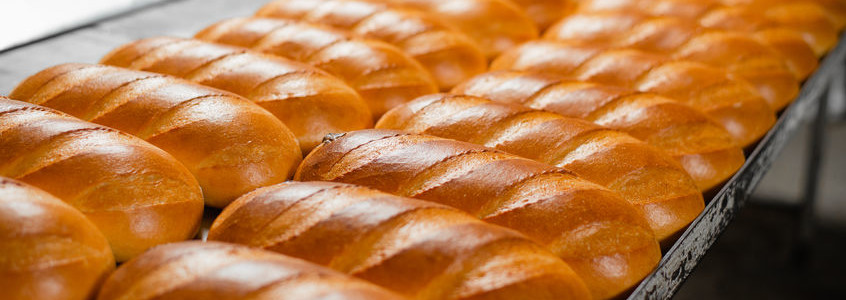
The oven is perhaps the most critical step in the baking process. Yet, over baking is easy to do, and happens more than you realize. So it’s important to get it right to avoid waste or a low quality product. For a precise bake, you need to understand the three crucial oven zones:
- Oven spring zone: the final stage of fermentation in the oven, ending at about 56°C (132°F). This must be manipulated to reach a yeast kill by 50% of the baking cycle. A quick yeast kill will give you more control over the height of your product.
- Critical change zone: the stage where yeast is killed, starch gelatinizes and protein denatures. It’s where your dough turns into delicious bread.
- Bake-out zone: after the arrival point, where the internal temperature reaches above 93°C (200°F) and water starts escaping the product. Increasing time in this zone will dry up the crumb of your product.
How do you know if you’re hitting the mark?
A thermal profile! This allows you monitor and track your baking zones to see if you’re achieving a crumb set of more than 85%. Then, you can lower oven temperatures or shorten baking times to get the optimal bake! This way you’ll avoid the shorter shelf life that comes with a dried-out, over-baked product.
Thermal profiling measures key variables involved in thermal processing of foods and bakery products. It measures things such as:
- Internal product temperature over process time is done at one or more points of interest with sensors, and graphical plotting of temperature-time curve.
- Convective and radiant heat fluxes used to bake the products (Btu/hr·ft2 or W/m2).
- Total heat absorbed by the product during total bake time (Btu/ft2 or Joules/m2).
- Air velocity in convection ovens (m/s or fpm) and oven (air) temperature (°C/°F).
- Oven humidity as humidity mass ratio in lb water/lb dry air (kg water/kg dry air).
The fundamental principle of thermal profiling lies in the fact that physical, microbiological and chemical changes in the product during thermal processing occur as a function of internal temperature. Taking the baking step as example, dough enters the oven at normal proofing temperature of 35°C (96°F) and exits as bread at 93°C ( 200°F).

